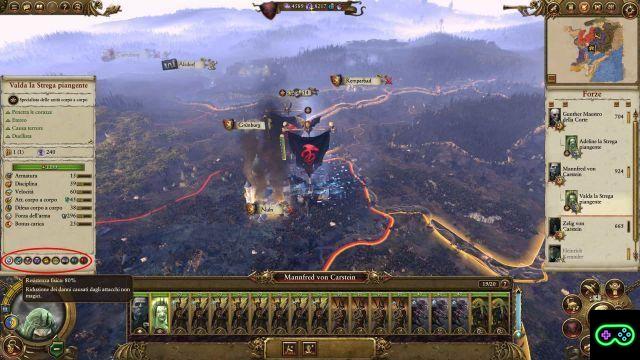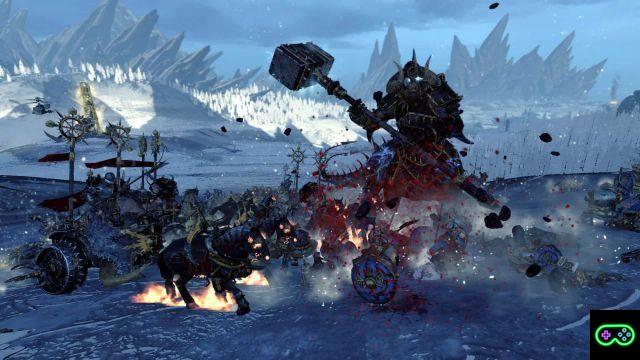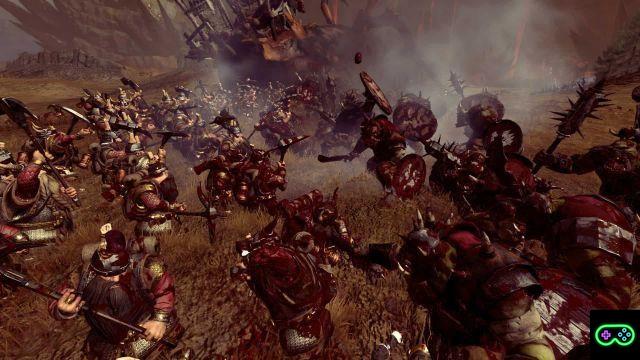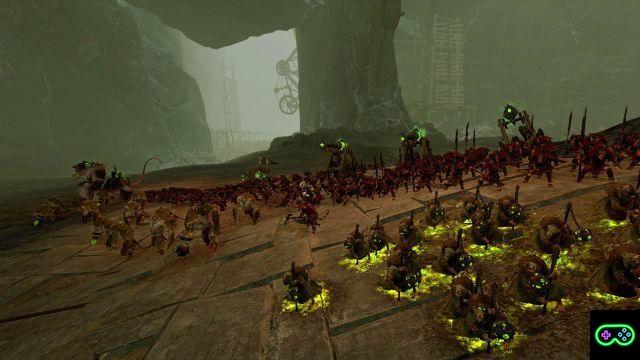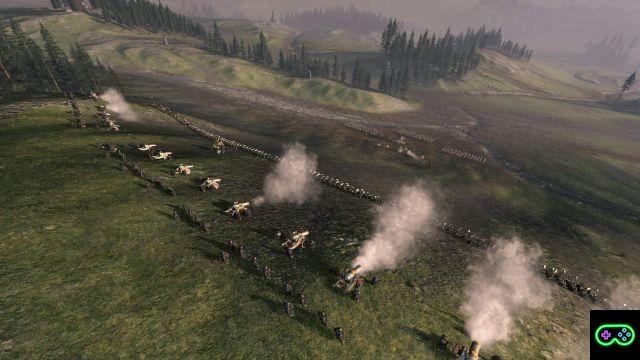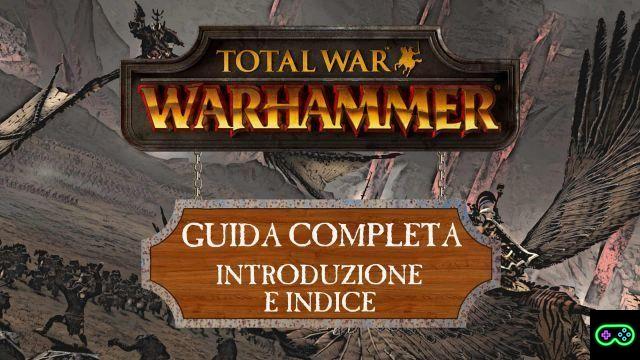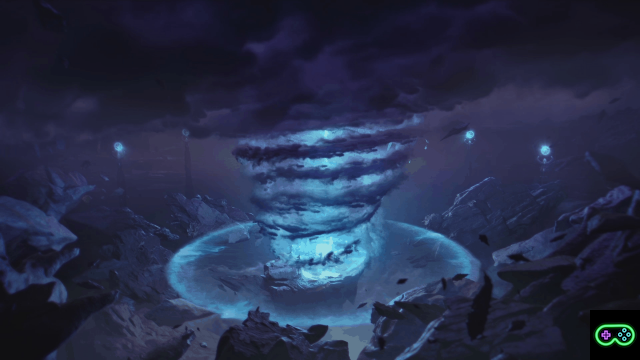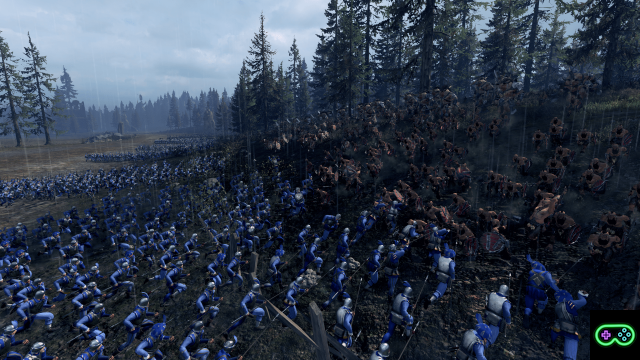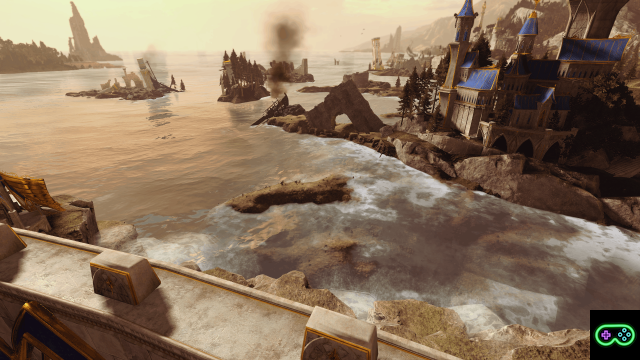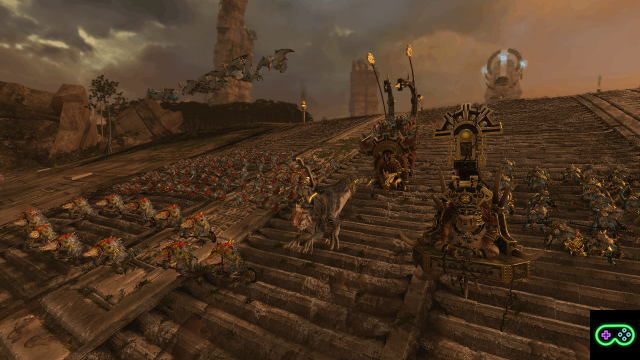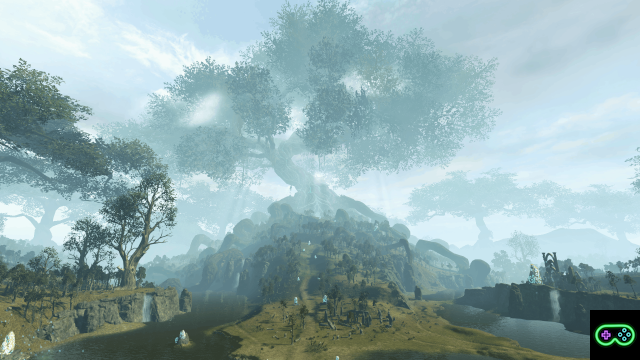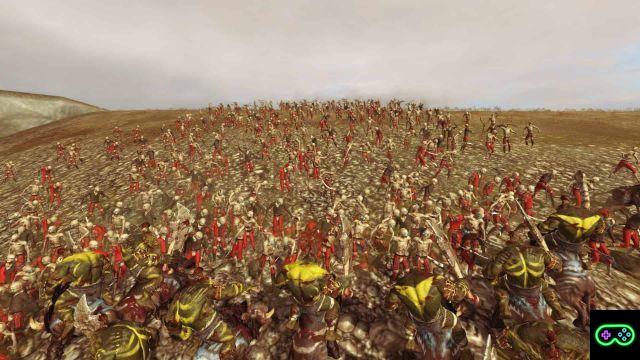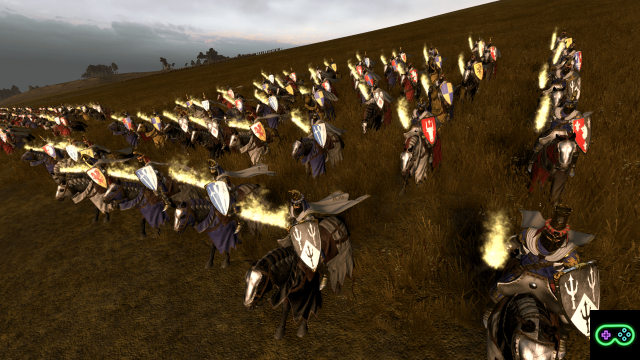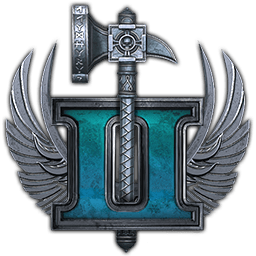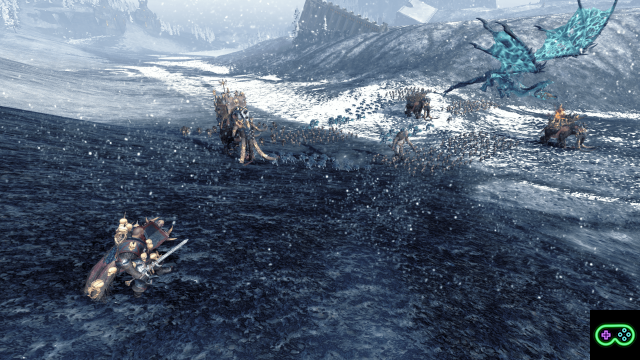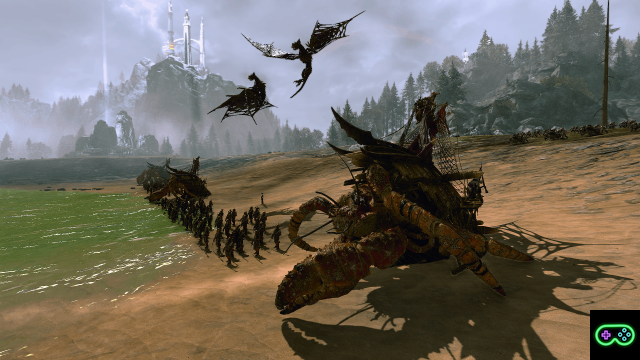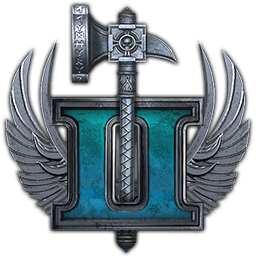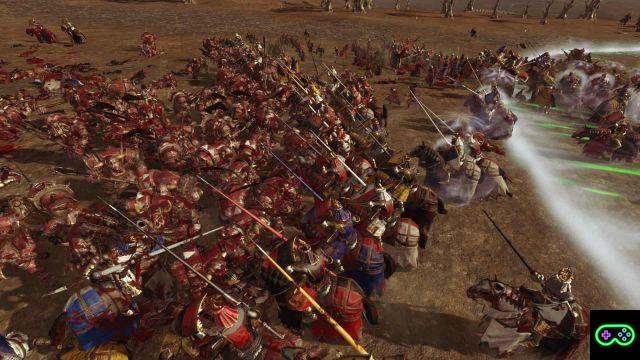— —
If you kill a man, you are a killer.
If you kill ten you are a monster.
If you kill a hundred you are a hero.
If you kill ten thousand you are a conqueror!
- Boiardo Alexander of Kislev
Armies
Each army in the game is made up of a Lord who leads it and a series of units and Heroes within it. It is never possible to have multiple Lords in a single army, just as it is not possible to have an army without a Lord (if the Lord of an army is killed, both in battle and outside, the player will be asked to immediately recruit a new one to replace him) .
No army can ever contain more than 20 elements at a time, including the Lord himself and any Heroes.
Create an army
To create a new army you need to use the "Create army" command, present in every city you control. You will be asked to choose the Lord to lead the new army from a choice of possible alternatives, who will then be positioned immediately outside the city.
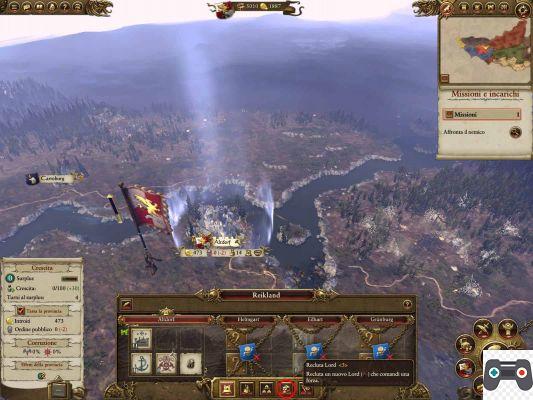
The command to Recruit a new Lord and create a new army.
Recruit new units
Standard recruitment
It is possible to produce new units in a few different ways depending on your faction, but the primary and available method for all is Recruiting. Whenever your army is on land belonging to your faction, just select it and press the “Recruit Unit” button at the bottom of the panel to order the creation of new troops. Which and how many units can be recruited depends on the buildings in the province where the army is located.
The recruit order is carried out at the beginning of your next turn, so if for example you give the order to recruit, pass the turn and are attacked by another faction while waiting for your new turn, you will not have the new forces on the field yet. you requested.
Global Recruiting
Global Recruitment is an option available to many factions, which can be used when an Army is in a friendly Settlement or is in Camp mode. Global Recruiting allows you to recruit units available from any of your Provinces, and not just the current one, but at double the cost and recruitment time.
Regiments of Renown
Some factions have Regiments of Renown at their disposal. Regiments of Renown can be hired at any time when it would be possible for the Army to carry out a normal Recruitment; they have special requirements (generally having at least one Lord of a certain level), completely disconnected from the normal presence of Buildings in the Settlements of the Province. Each Regiment of Renown can only be owned by a single faction at any given time, and will become available for recruitment after a few turns in case it is destroyed in battle or discharged.
Unit management
Dismiss units
You can get rid of a unit at any time by selecting it and pressing the “Leave” button, which will appear above its tab. You can eliminate multiple units at once by choosing all of them before pressing the button on one of them, and dismissing the Lord once he is alone can completely cancel the army.
Dismissing units is useful for getting rid of weak soldiers and replacing them with stronger types of units that have been unlocked in the meantime, or to minimize a contingent not involved in a conflict so that it weighs less on the economic balance of the faction.
Merge multiple units
If you have multiple units of the same identical type in a single army and at least some of them are damaged, you can unify them all; to do this, select all the desired units and press the “Merge” button in the drop-down menu above the tabs of the chosen units. The process adds up all the soldiers alive in the chosen units and starts creating new cards, moving on to the next one only when the previous one is full (so all new unit cards, except one, will always be full).
Unifying the units is mainly used when you have wounded regiments and at the same time you want to free up slots in the army, thus optimizing times. Sometimes, if some units are badly damaged, it is even faster to merge them to create a single, essentially full regiment, while simultaneously recruiting the units that occupied the other slots.
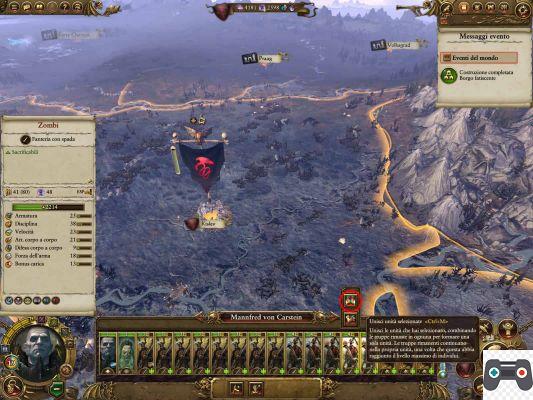
The command to unite various units of an army.
Move units between two armies
If you have multiple armies, you can transfer units from one to the other. To do this it is necessary to bring the two armies into contact on the campaign map, and then carry out the unit changes through the panel that will be opened automatically.
Change of lords to an army
It is possible to change the Lord of an army by immediately recruiting a new one. To do this, you must use the appropriate button located in the lower right part of the Lord's Details panel.
You will be asked to choose a new Lord instead of the previous one, drawing from the same list of Lords available to create new armies. The Lord you have ousted will temporarily disappear from the game, but after a certain number of turns it will again be possible to recruit him to form a new army, or to take command of an existing one by repeating this same procedure (exactly as if he had been wounded).
Move and attack
Once you have selected an army, just right click anywhere on the map to give it the order to move there. You can move an army into a city you own, or into an enemy army or city to attack them.
The army movement points available for the current turn are indicated by the green quarter arc to the left of the army Lord's portrait (each notch indicates 25% of the total). Even just selecting the army you will see a yellow area appear on the campaign map around it, which represents the maximum distance it can travel in the current turn. If, instead of clicking, you keep the right button pressed in a point on the map, you will have a preview of the path that the army will follow and how many travel points it will spend to reach the destination; leaving the right button will order the movement, while pressing the left button will cancel it.
Post-victory options
Whenever you win a battle against an army outside of a Settlement, you will be presented with a number of options. There are three distinct options (which may not all be always available, depending on which factions have fought), with different names for the various races but with the same effects: get extra money but lose replenishment speed, increase the Discipline of all the army for a few turns, or increase the reintegration of the post-battle army. These effects do not apply to any reinforcement armies.
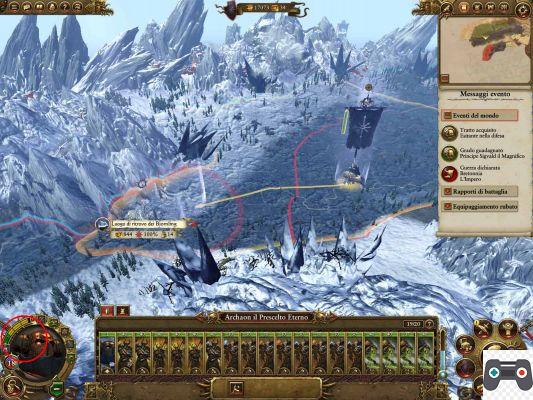
While ordering a move, the indicator to the left of the portrait gives a preview of how many movement points will be spent to perform it.
retreat
An army that does not wish to fight a battle, or that fights it and loses it, will make a retreat move on the campaign map. The army will move in a random direction, for a distance independent of its remaining movement.
An army may never retreat if its last action was another retreat or if it is inside a Settlement. If an army loses a battle and cannot retreat, it is automatically completely destroyed.
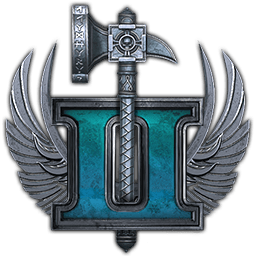 In TWW2 the retreat is no longer possible when in "forced march" mode, while in W1 it was possible.
In TWW2 the retreat is no longer possible when in "forced march" mode, while in W1 it was possible.
Control area
Each army has its own Zone of Control, represented by a red circle immediately around the army (visible if you leave the cursor over it). No enemy army can cross the army's Zone of Control, except to attack something inside it (ie the army itself, or another very close army or city).
The main function of the Zone of Control is to allow the army to block a narrow passage on the map, preventing the enemy forces from continuing further than by engaging in battle.
Reinforcements
In addition to attacking or being attacked by an enemy, each army can also participate in a battle in the form of Reinforcements. An army will automatically take part in any battle fought in its immediate vicinity, as long as it involves other armies of its own faction or an allied faction. In the case of a battle of allies, it is possible not to request or not to provide reinforcement even if you would be at the right distance.
To find out if an army will act as a reinforcement even before giving the order to engage the enemy, in the preview of your movement you will see a thin red arrow appear that connects the reinforcement army to the battle site.
Refund
If there is a damaged unit in an army (the green life bar on its sheet is not full), whether it is a regiment that has lost men or a single character / monster not in full health, it will automatically recover. life at the start of each shift. Units usually replenish when they are on the ground of their faction or an ally, or when they take on a particular mode that allows them to replenish no matter where they are.
Attrition
When an army is in certain situations, it could suffer attrition. The exact ways in which attrition is applied vary from case to case, but generally depend on the type of terrain the army is on, the various levels of Corruption in the region, or other particular active or passive factors.
Attrition damages every unit in the army. A unit cannot be completely killed by Attrition, but its health can be minimized, making it totally unsuitable for battle. Some races are immune to certain types of attrition, as indicated by a special Skill called "Stamina".
The forms of attrition due to the natural conformation of the territory (for example a swamp, a mountain pass or the like) are "immediate", that is, they cause damage just by crossing the area during one's turn (and continue to cause it if one remains there. inside in subsequent rounds); all other types of attrition occur only at the end of the turn, which is why going through them does not cause any damage, but stopping during the turns of the other players does.
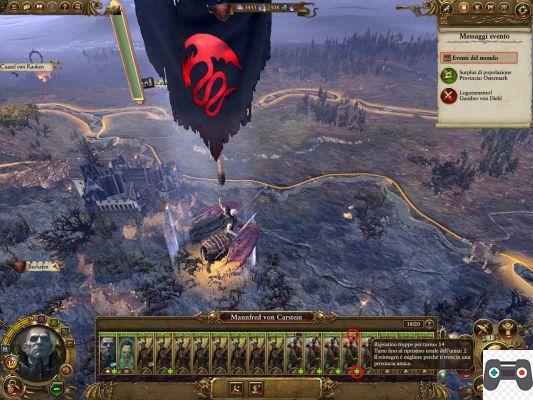
The plus symbol indicates that the unit is replenishing, and the yellow portion of the life bar gives a preview of how much health will be replenished. By pausing the mouse on the reintegration symbol you will have a more complete overview of the operation.
Modalities of the armies
Normally, an army on the campaign map moves and acts in what we might call a "neutral mode", which does not alter the general rules of the game. However, it is also possible to assume different Movement Modes, to obtain various results. Note that not all factions have all of these modes (I will write in the section of the guide dedicated to individual races which special modes their armies have).
Marcia
Engaging in March Mode raises the army's movement points from 100% to 150%. However, the army cannot attack any enemy (it can still intervene as a Reinforcement) or recruit new units, and if it is involved in a battle while in this Mode all units will start with an intermediate penalty to Strength.
Ambush
An army in Ambush mode completely loses the ability to move and recruit, but becomes effectively invisible to the enemy.
There is a certain probability (depending on several factors, including having ambush armies themselves) to reveal, at the beginning of each turn, the hidden armies of the other factions in the visible portions of the map, rendering the opposing Ambushes in vain. . However, if you walk into the Control Zone of an undiscovered Ambush army, an Ambush-type battle will be triggered, where the army caught by surprise will not be able to preemptively retreat and will start on the field with a forced disposition of its troops and very unfavorable.
Assault
Assuming Assault Mode consumes 50% of the army's total movement points, and as long as you maintain it, the available movement points remain reduced to 75% of the total. An Assaulting army never suffers attrition (regardless of its origin), and if it is in non-faction territory it will damage income, public order and Province Growth, while producing income for its race. If an army in Assault mode gets involved in a battle, all of its units start with a high penalty to Stamina.
Camp
Engaging in Camp Mode consumes 50% of the army's total movement points, and as long as you maintain it, you cannot move at all. An army in the Camp does not suffer attrition, and can indeed recruit and reintegrate even on enemy soil; in addition to this, all units in the army receive a bonus in Defense and Discipline if they are involved in a battle.
Channeling
Engaging in Channeling Mode consumes 50% of the army's total movement points, and as long as you maintain it, the available movement points remain reduced to 75% of the total. An army in this Mode has a +15 bonus to its Power Pool for casting Spells in battle.
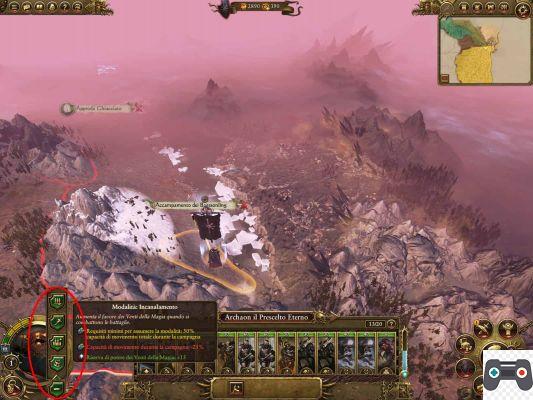
The drop-down menu for the various Modes. Notice how the movement bar on the left shows a preview of what effects the Mode will have.
Characters
Lords are nothing more and nothing less than the commanders of armies. Heroes are characters that are in fact similar to Lords, but instead of leading armies, they can either join them as normal units, or act on their own on the campaign map.
Subscription
Lords and Heroes have a level ranging from 1 to 30. With each level increase you get a point that you can spend in the character's skill tree, obtaining new passive upgrades, skills, spells or mounts.
The Lords accumulate experience in fact constantly, even without taking particular actions, but they gain much more by fighting battles. The amount of experience obtained is disconnected from the Lord's own work on the field and depends only on the outcome of the fight, the higher the better the battle result (for example, therefore, a Defeat of measure gives a certain amount of experience, a victory of measure gives more, and a decisive victory even more).
Heroes, just like Lords, gain a lot of experience by taking part in battles, but they can also quickly rise by performing their special actions (the more experience points the greater the success of the action).
 In TWW2 the maximum character level has been increased to 40.
In TWW2 the maximum character level has been increased to 40.
Character traits
Characters are born with traits, or can acquire some of them during their stay on the campaign map (usually in conjunction with taking an action, such as winning a battle). The traits are passive modifiers to some characteristics of the character, of his army or of the Province in which he is found, in all respects similar to the passive abilities that can be purchased for him with the level increase, except that in fact there is no control over their obtainment. You can read all the traits of a character in his details panel.
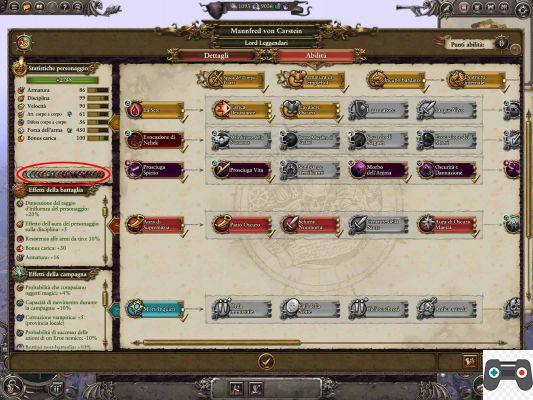
The skill panel. On the left are summarized all the characteristics and effects of skills and traits, both active and passive, on the battlefield and in the campaign map.
Magical Items, Banners and Followers
At the end of a successful battle, a Lord could gain a Magic Item, Banner, or Follower.
Magic items and Followers can be equipped by the Lord himself, or they can be transferred to another Lord or Hero - to do so, simply choose the desired Character and equip the element from its interface. Magical Banners can only be owned by a Lord, but in practice they can be used on any unit in the army.
Characters wounded and killed
Both Lords and Heroes can be wounded or killed (the term “wounded” in this case is completely unrelated to their remaining health).
An injured character will be temporarily removed from the campaign map, becoming unavailable for a certain number of turns, only to become recruitable again alongside new Lords and Characters. You can be wounded as the result of an assassination attempt by an enemy Hero, gaining a Critical Failure on any Hero action, or when the character runs out of health in battle.
A killed character, as opposed to a wounded one, is instead lost forever, and it is not possible to recover him in any way. A character is killed if an enemy Hero achieves a Major Success by attempting to assassinate him, or when his army is completely destroyed as a result of a battle. Sometimes a character can be killed rather than injured even by simply falling in battle, but I don't know the exact logic behind this mechanic.
The only characters that can never be killed are the legendary Lords (such as Karl Franz, Ungrim Ironfist, Azhag the Slayer, etc.), who will instead be wounded even where a generic Lord would have been killed. The only way to permanently and forever eliminate a legendary Lord, therefore, is to destroy the faction to which he belongs.
 In TWW2 each character unlocks the “Immortal” trait at level 20, which replaces the final death of the character with a simple wound, making him available after a few turns of convalescence.
In TWW2 each character unlocks the “Immortal” trait at level 20, which replaces the final death of the character with a simple wound, making him available after a few turns of convalescence.
Heroes in an army or alone
As long as a Hero is attached to an army, it is treated in all respects like any other unit. This means that he will be deployed on the battlefield, he can suffer attrition, enjoy replenishment etc. A Hero inside an army does not lose any of his passive abilities, and according to his type he gives some additional bonuses to his army, but he cannot perform any special actions without first separating and returning independent on the campaign map.
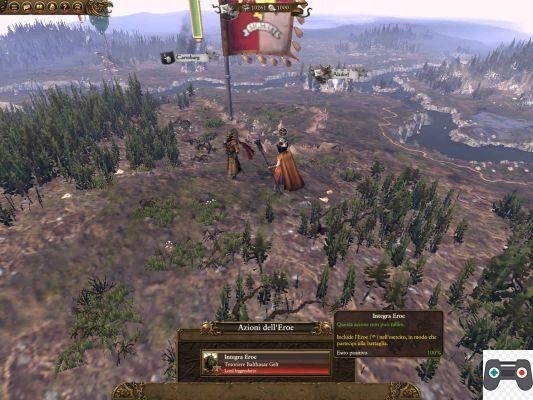
Add a Hero to an army.
When a Hero is not accompanying an army it ceases to be considered a unit, and cannot participate in battles in any way, not even in the form of a Reinforcement. A Hero alone does not suffer Attrition, never regains Health, and cannot enter Settlements. Keeping a Hero alone on the campaign map allows him to perform all special Hero actions, as well as being Deployed in a Province.
Hero actions with a target
These actions are performed by the Hero against a specific enemy target (an army, character or settlement). The list of existing actions is very long, and basically every type of Hero has its own roster of known actions. However, all actions (regardless of their objective or purpose) can lead to a Critical Failure, which will leave the Hero attempting to take them injured and out of action for a few turns.
The probability of success of an action is calculated as follows:
- Basic probability, dictated by the type of action and the Hero who wants to perform it
- + 1% for each Level (over 1) of the Hero who performs the action
- -1% for each Level (over 1) of the Character target of the action / leader of the Army target of the action
- Variable penalty due to the presence of defensive buildings in a targeted Settlement
- -50% if the Hero successfully completed an Assassination in their previous turn
- -20% if you target someone or something they have already taken, regardless of the outcome, an action on their current turn (that is, their faction has not had to play since their last action against them was attempted); this penalty is not cumulative for several actions attempted in a row
- Any bonuses or penalties due to Skills, Followers and Objects of those who perform the action or of those who suffer it, or of other Heroes present or deployed in the Province where the action takes place
Deploy a Hero
In addition to taking actions against targeted targets, each Hero on the map alone can also be Deployed. Deploying the Hero has no cost or risk of failure, but a Hero who even starts the turn as Deployed loses the ability to act in any other way.
The effect of the Deployment depends on the type of Hero, and on whether you Deploy him in your territory or in one of any other faction (generally, in the first case your territory will receive bonuses, and in the second the territory of others will receive penalties).
Sometimes Deploying a Hero in a specific Province is also required to continue the Assignments of a Legendary Lord.
 In TWW2 all hero deployment dynamics have been suppressed. The passive effects of heroes are always active in the region where the hero is present, without this entailing movement penalties or action point costs.
In TWW2 all hero deployment dynamics have been suppressed. The passive effects of heroes are always active in the region where the hero is present, without this entailing movement penalties or action point costs.
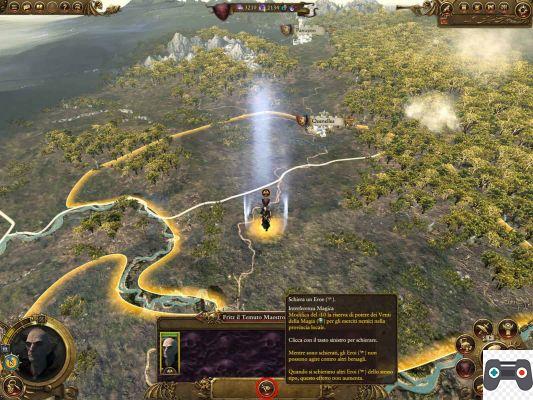
The command to Deploy a Hero, with the description of the effects produced.
— —




